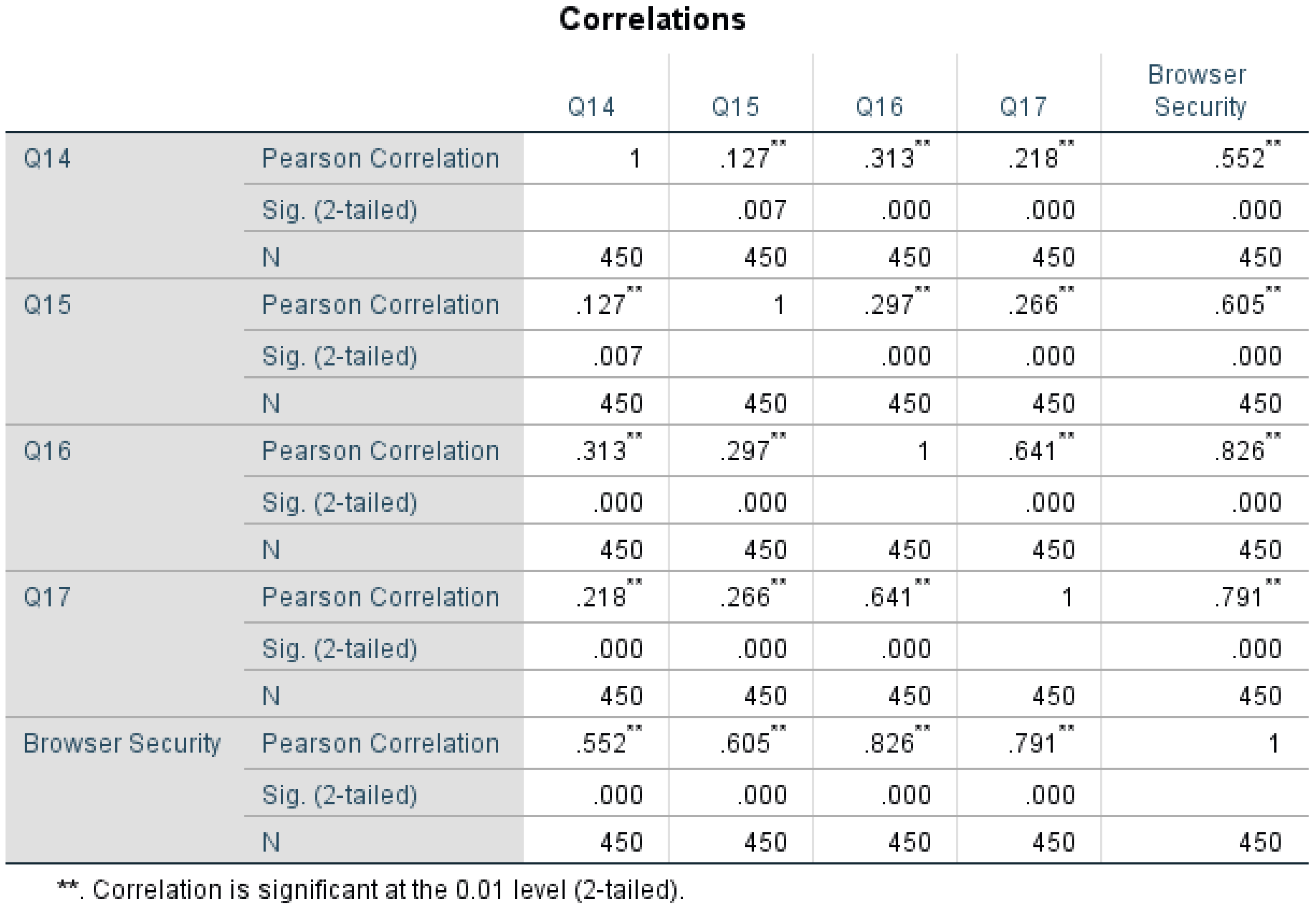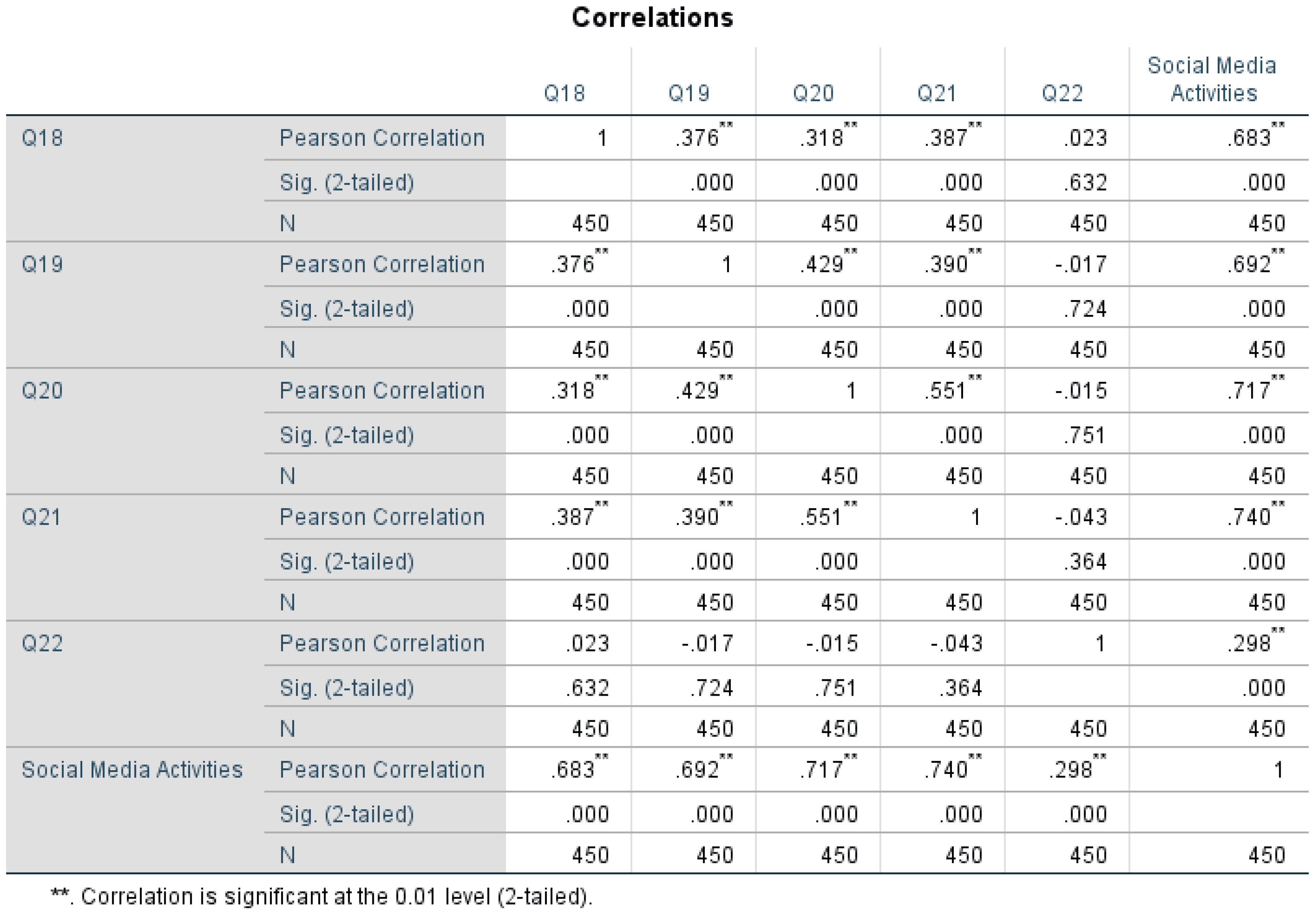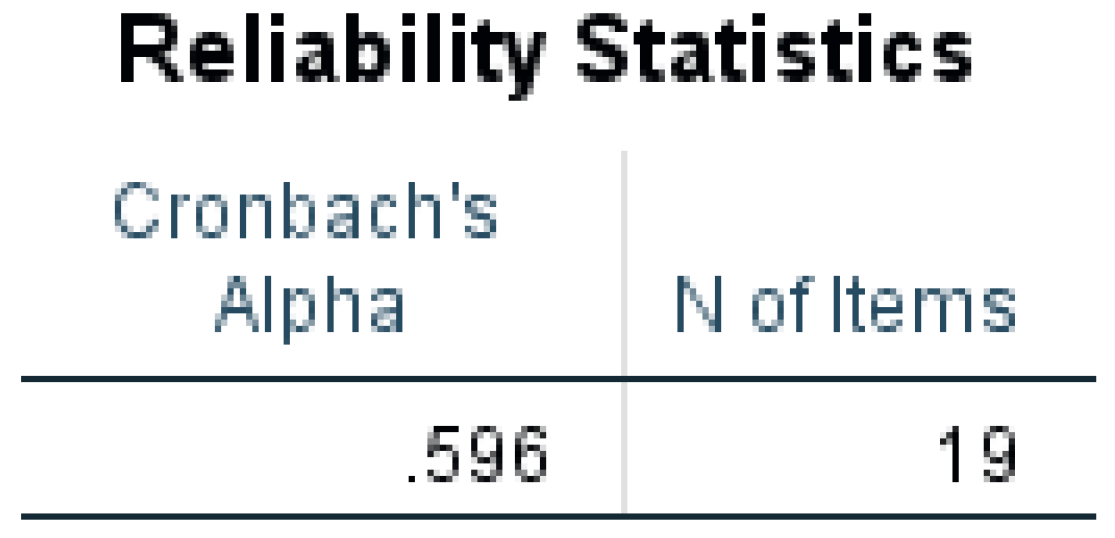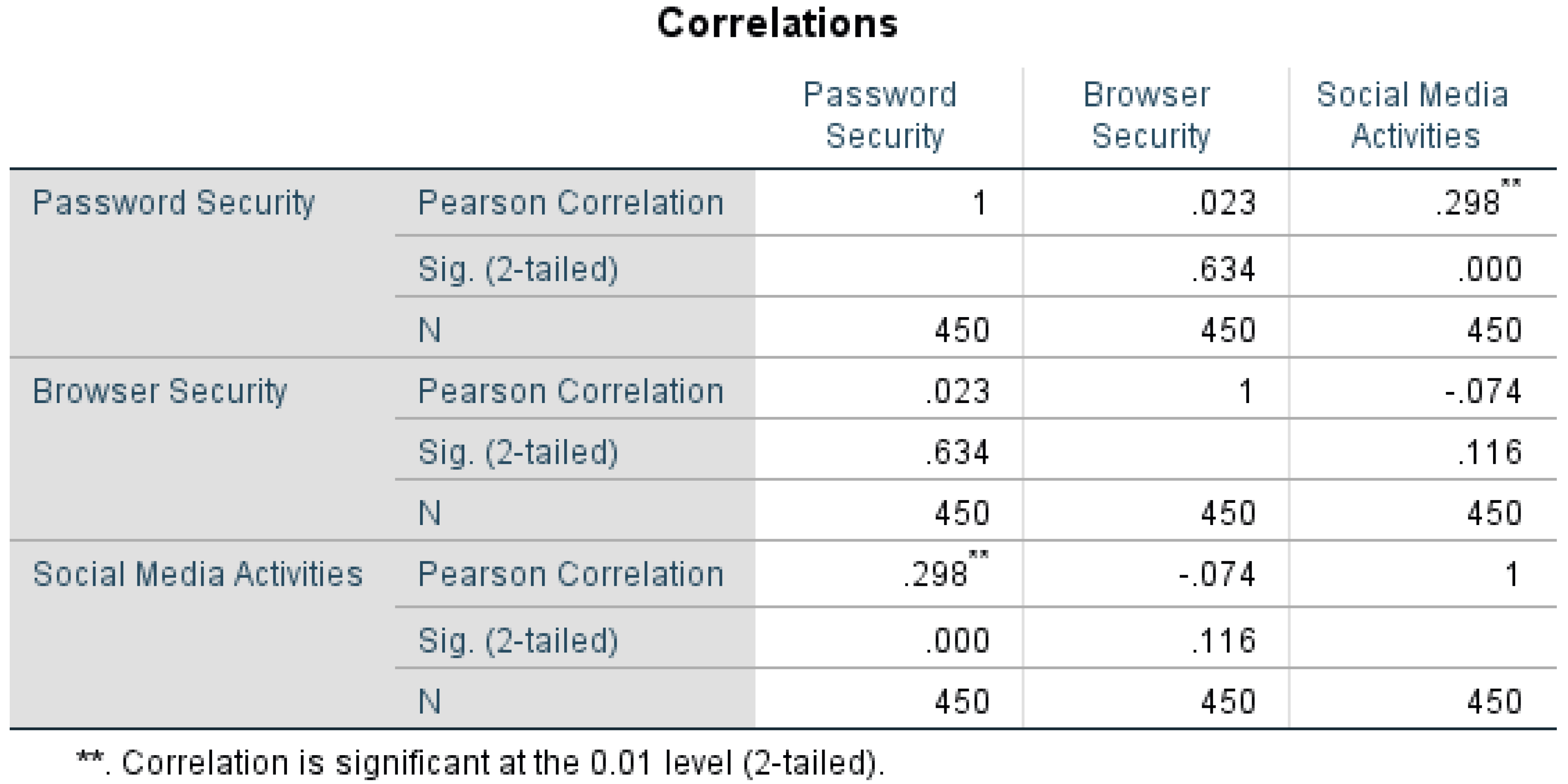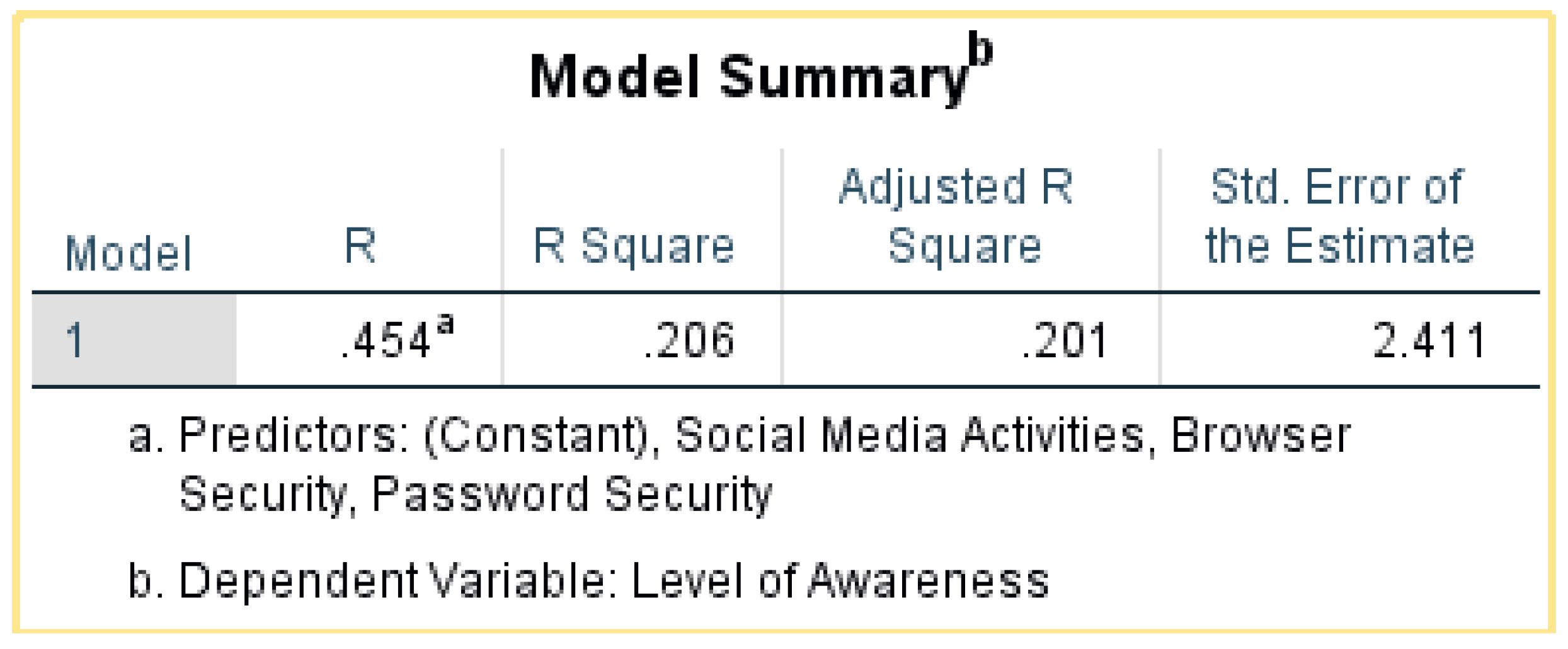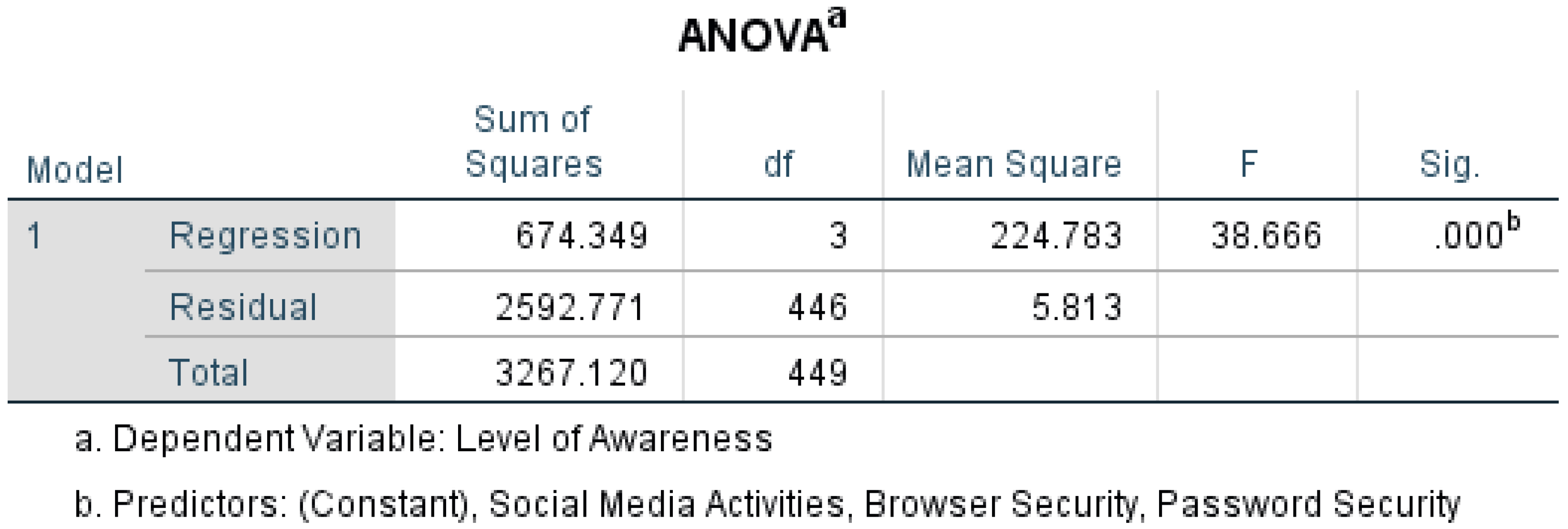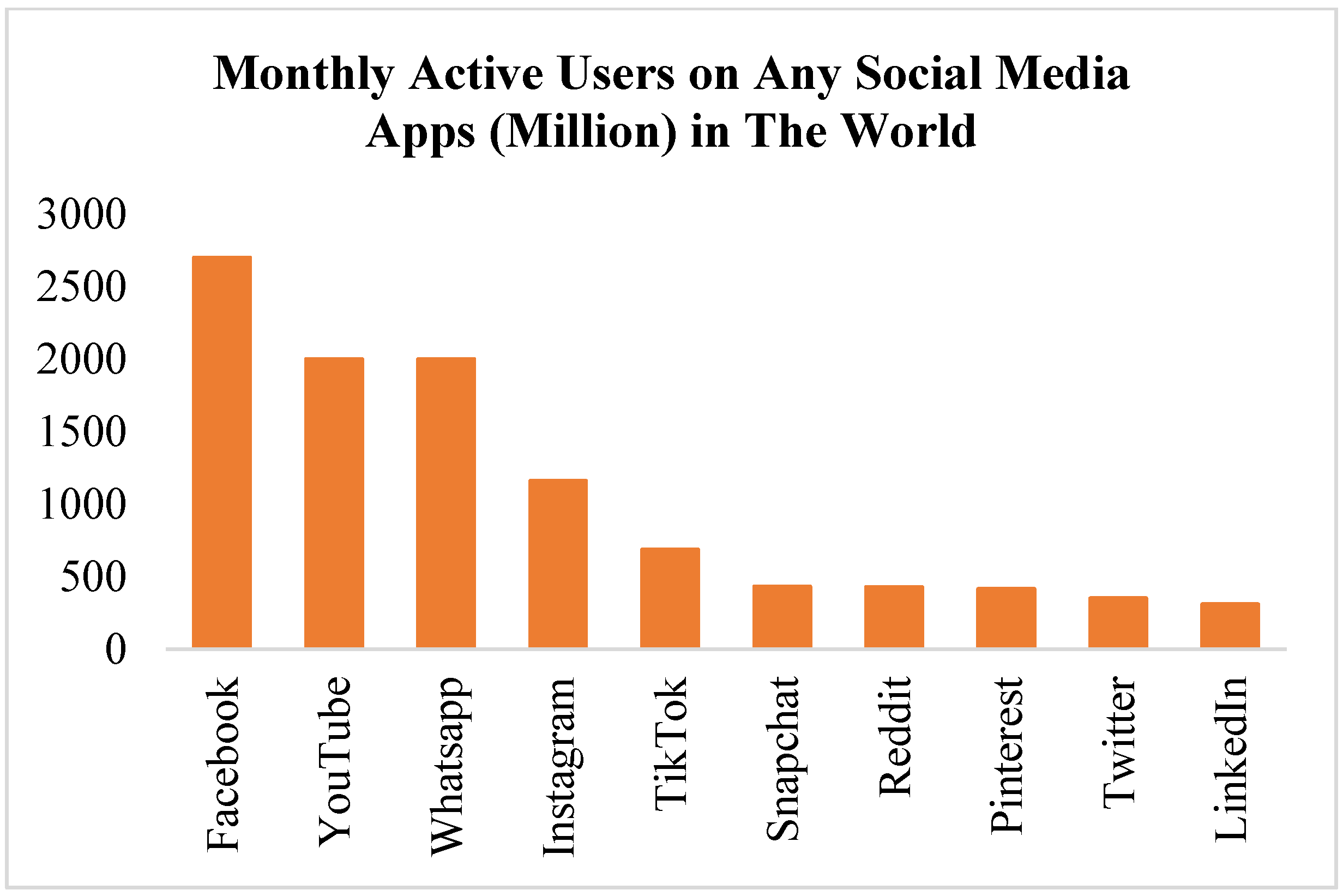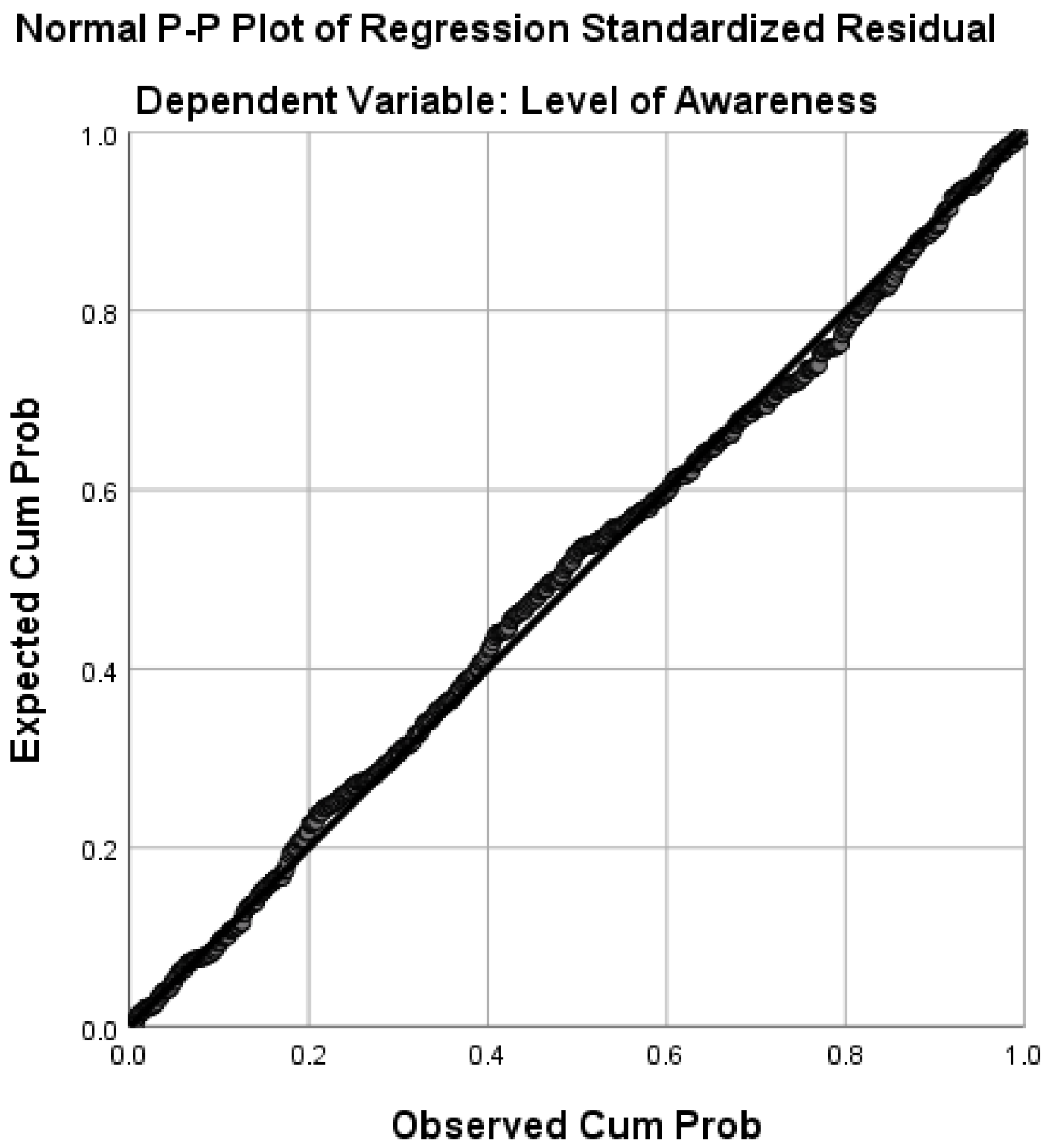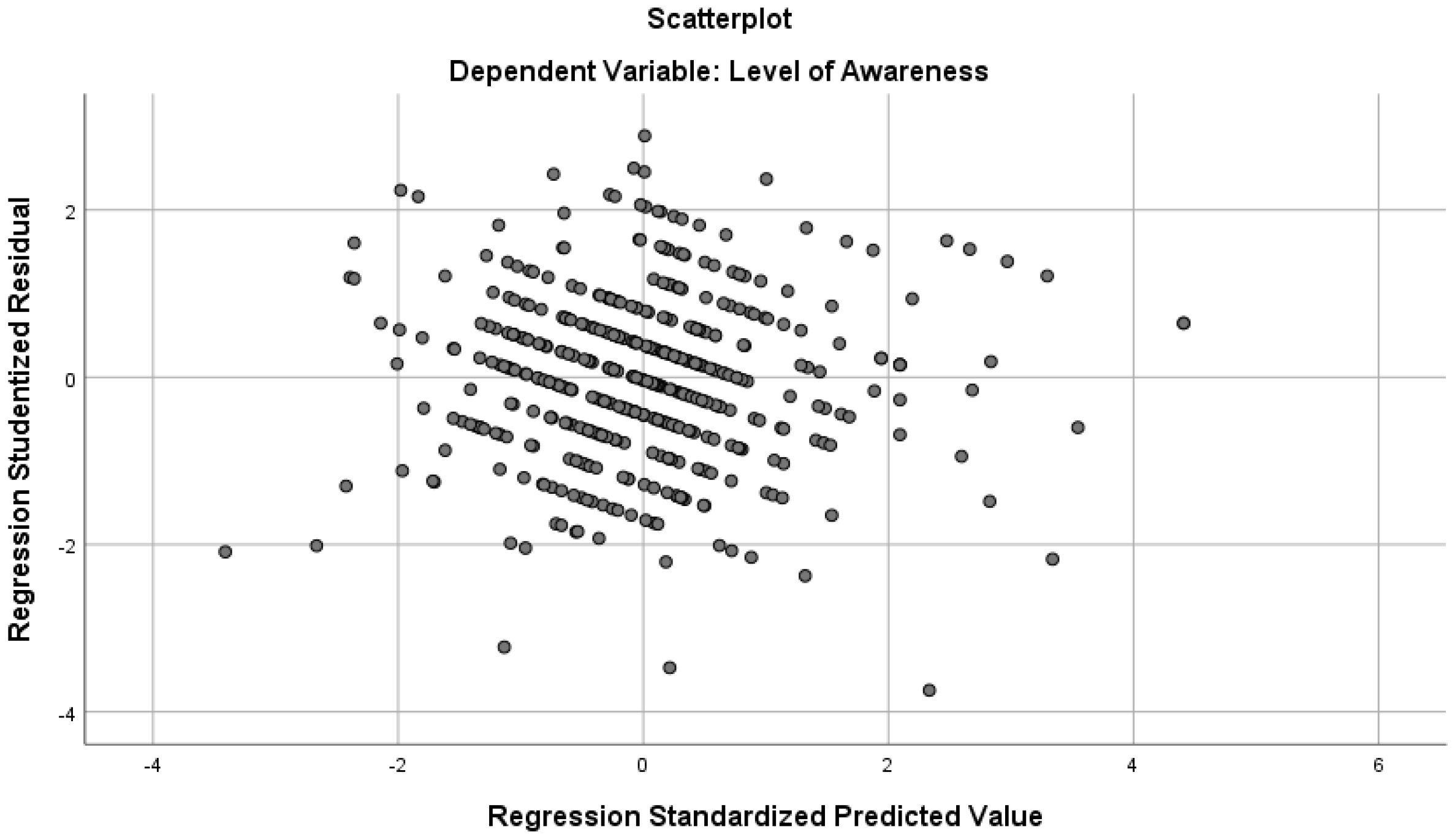1. Introduction
The rapid advancement of contemporary technology has altered our life, particularly the methods of communication utilized to provide information and interact with people. Everywhere in the world, several networking techniques have been developed. In response, both the social and commercial spheres have begun to offer additional services and embrace new technologies to give customers data access anywhere at any time and from any place. The primary motivation for automation operations and innovation is to help the diverse variety of customers, fast-expanding due to increased Internet usage [
1].
As a result, the number of hackers and organized cybercrime gangs has skyrocketed. These cybercriminals have been exploring new ways to carry out cyber-attacks. The primary motivation for cyber criminals seems to be the personal benefit gained by acquiring sensitive information and retaining it for blackmail. Hackers may also benefit by supplying private information to competition on the dark web, making cyberspace insecure and presenting significant threats to businesses and customers. As a result, cyber security breaches have become a severe danger to world security and the economy, compromising essential infrastructure and wreaking havoc on company performance, resulting in significant cognitive property loss [
2].
Cyber security should be emphasized throughout a business, not only in IT [
3,
4]. The global trend in cyber security issues is primarily due to the fact that most personnel do not adequately adhere to the specific security regulations and instructions supplied in the workplace. People represent a significant security vulnerability that exposes organizational assets to external and internal attackers; they are the weakest link [
5,
6]. The human factor is the most common way for hackers to get unauthorized access to vital systems in a protected environment [
7,
8]. As a result, implementing proactive cyber security measures is essential, particularly in developed nations where the Internet is a fundamental part of everyone’s life, such as Saudi Arabia. During 2007–2009, the ratio of Internet users improved significantly, rising from 43 percent to 51 percent. By 2018, the rate of Internet users was around 19% [
9,
10,
11,
12,
13].
The Kingdom of Saudi Arabia has expanded its investment in boosting its security infrastructure, according to the Telecommunications Act of June 2001. Therefore, it is vital to strengthen and manage the telecommunications industry [
14]. It was for this purpose that the Communications and Information Technology Commission (CITC) was established to supervise Internet regulation and network traffic. In addition, the Computer Emergency Response Team (CERT) was established in 2006 to provide organizations with the knowledge and skills needed to identify and prevent cyber-attacks through teaching and training activities [
14]. As a result of the incorporation of cyber security in Saudi Vision 2030, the Kingdom’s standing in the sphere of technological advancement has rapidly increased in industrialized nations [
15].
Cyber security awareness has received insufficient attention given the fast rise in cyber dangers and cybercrime in the Kingdom. The importance of security has not been examined among college students [
16]. Since hacking attacks of data systems in schools and colleges are becoming more widespread, students must understand the implications and problems of cyber security and cybercrime. There is an urgent need to design a comprehensive training program to raise awareness of the consequences of personal information loss, which may undermine student confidence and institutional credibility [
17,
18,
19,
20].
It is the most basic and widely used safeguarding system. The first stage in obtaining safe access is to provide the user’s login and passcode. The main issue with passcodes is that we can forget them. As a result, we frequently search for ways to remember them, such as writing them in a notebook, using toolkits to organize and save passcodes (passcode managers or passcode keepers), or by using “Cookies”, which keep the user ID and passcode (hashed) to access the website. Another disadvantage of this method is that passcodes could be stolen or decrypted [
21,
22,
23].
Increased Web Browser Attack—The services supplied by developing technologies are often delivered through web pages. Web browsers are undoubtedly the most widely adopted apps, allowing consumers to undertake a wide range of tasks that attach them to an outside world. As a result, Internet browsers are becoming an immensely crucial tool for millions of Internet users nowadays. Unfortunately, like every piece of software, Internet browsers have a variety of flaws [
24,
25]. The hackers use such defects to gain control of the user’s computer, hack the customer’s data, delete files and use the stolen machine to target other systems. According to an Osterman Research report [
26], 11 million virus variants had been detected by 2008, with 90 percent of these viruses originating from covert downloads from prominent and often credible locations. If Internet browser consumers do not identify a rogue website, they risk disclosing personal details to a potentially hazardous party. Our survey focuses on active security indicators since active security measures are directly tied to automatic hacking identification in Internet browsers.
Social media are electronic connections (such as social networking websites and microblogging platforms) wherein people build online groups to exchange information, thoughts, or private messages. Privacy is defined as “independence from unapproved access” and the capacity to govern one’s data since only those whom the possessor desires to have access to them are permitted to use them. This encompasses both authorities with respect to what material is visible on social media and who may see it. Social media use is widespread across general culture and on school campuses. The growing reputation of social media websites has given rise to a new range of concerns and problems that now confront us in the twenty-first century. Since digital networks are their primary modes of communication, modern college youth are at a higher risk of image injury or loss of money than previous generations. As a result, we conducted an experimental evaluation of students’ cyber security understanding and activities, concentrating on the most frequent security vulnerabilities facing the overall ecosystem. Some of the key contributions are listed below:
A cybersecurity awareness assessment was carried out with the college students of Imam Abdulrahman Bin Faisal University based on a few key issues, such as password security, browser security, and social media;
An investigation was conducted to analyze the students’ level of knowledge about security concerns, especially cybercrime;
Statistical analysis was performed and, based on numerous tests, the results were estimated;
The data was collected through the survey questionnaires and, based on the responses, SPSS and ANOVA tools were utilized to make the analysis.
The remainder of this paper is organized as follows:
Section 2 contains a literature review,
Section 3 discusses the research methodology,
Section 4 presents the results which were subject to many tests, and
Section 5 consists of a discussion of the results, after which the paper is concluded.
3. Materials and Methods
A survey approach was utilized to meet the study’s goals and collect qualitative data on the degree of cyber security awareness among Imam Abdulrahman Bin Faisal University students. The study was carried out online to ensure that a mixed group of male and female pupils’ responses were collected quickly and responsibly. There were 20 items in the survey covering all aspects of cyber security, including five demographic items.
The questions in the Internet use section were designed to elicit information about students’ online behavior. The questions about the usage of security technologies were designed to assess current security practices in IAU University students. The browser security component was designed to evaluate students’ comprehension of the security of the browsers they often use. Finally, the networking sites and cyber security knowledge portions examined students’ understanding of the risks of utilizing various social networking platforms and how to respond to a cybercrime occurrence. As a result, we investigated the students’ cyber security awareness, abilities, behavior and attitudes, and self-perceptions. These questions were distributed to undergraduate and post-graduate students, and a total of 450 responses were received. These responses were again categorized according to the hypothesis and analysis. The following are the categories of questions: Questions based on password, browser, and social media activities. The responses to these questions were multiple-choice answers, with the following choices: Strongly Agree, Agree, Neutral, Disagree, Strongly Disagree.
The following are the questions drafted:
Q1. Passwords are made up of 12 letters and a combination of letters, digits, or signs.
Q2. Change password periodically.
Q3. Use previously used passwords whenever needed to create a password.
Q4. Use a single secure passcode for all web pages and logins.
Q5. It is inconvenient to have a different long and solid passcode for every webpage and account.
Q6. I do not mind sharing my passwords with my friends.
The questions related to browser security are as follows:
Q7. The web browser should be updated regularly.
Q8. Avoid installing extensions from third-party websites.
Q9. Examine the web browser’s privacy controls and parameters regularly.
Q10. Examine browsing history for any unusual activity.
The questions related to social media activities are as follows:
Q11. It is OK to publish private photographs on social networking sites.
Q12. Accepting invitations from outsiders seems OK.
Q13. There is no concern with openly posting one’s present location on social networking sites.
Q14. No problem with adding all personal information to social media.
Q15. Learn how to submit any danger or questionable conduct on social networks.
The passcode is an essential security element that protects data and information while allowing access to authenticated systems. A passcode should be at least 12 characters, including letters and numerals, capital and lowercase letters, and at least one symbol or unique character [
43]. Given this, we investigated the students’ understanding of the fundamental concepts of password security and how they handle their passwords.
5. Discussion
The results of partial hypothesis testing using the
t-test (
Table 14) show that the password security variable significantly affects cybersecurity awareness (
p-value = 0.0001). The regression coefficient of the password security variable in the multiple linear regression model (
Table 11) shows the beta value of 0.147. Therefore, it can be concluded that password security has a positive and significant effect on cybersecurity awareness. The positive impact shows that using passwords will increase cybersecurity awareness by 14.7%. The browser security variable significantly affects cybersecurity awareness (
p-value = 0.0001). The regression coefficient of the password security variable shows a beta value of 0.188. Therefore, it can be concluded that browser security has a positive and significant effect on cybersecurity awareness. The positive impact shows that knowledge of browser security will increase cybersecurity awareness by 18.8%. The social media activities variable significantly impacts cybersecurity awareness (
p-value = 0.0001). The regression coefficient of the social media activities variable shows a beta value of 0.241. Therefore, it can be concluded that social media activities positively and significantly affect cybersecurity awareness. The positive effect shows that using social media will increase cybersecurity awareness by 24.1%.
The results of simultaneous hypothesis testing using the F-test (
Table 13) show that password security, browser security, and social media activities have simultaneously significant effects on cybersecurity awareness (
p-value < 0.05). The magnitude of the influence of the two variables can be seen based on the value of the coefficient of determination (R2) obtained in this study, which is 0.206, indicating that password security, browser security, and social media activities contribute to the influence of cybersecurity awareness by 20.6%. Meanwhile, the residual value of 79.4% indicates that other factors that affect cybersecurity awareness are not included in the model. It should be emphasized that not all models with a low R2 are bad models. According to [
67] (2019), regression models with R2 values below 50% can be accepted in several fields, such as the social field and the study of human behavior. Suppose the value of R2 is low but the independent variable has a significant effect. In that case, the model can still provide conclusions about the relationship of the independent variable to the dependent variable.
The p-value (p-value < 0.05) indicates that the respondents in this study already have an awareness of cybersecurity awareness, but it is still low; this is because they do not take more or actual actions to implement cybersecurity in their daily life (R2 = 0.206). Several reasons were thought to affect the results, probably because most respondents in this study (53%) were women. According to (Alotaibi et al., 2017), men have a higher awareness of cybersecurity than women. The research that supports the results of this study is research conducted by Alharbi and Tassaddiq (2021) among students at Majmaah University, Saudi Arabia, which included 60% male respondents and stated that students at Majmaah University already have a high level of awareness of cybersecurity awareness. It is proven by the high R2 value reaching 55% (R2 = 0.55) and the variables used, such as security tools, browser safety, social networking, and other cybersecurity knowledge, have a positive effect (p-value < 0.05).
Based on the three variables used, the password security variable has the lowest coefficient value (β = 0.147), implying that students still lack awareness of password security. It can be seen that most students (41%) disagree that passwords must be changed periodically; most students (30%) are more likely to use 1 password for all websites/accounts and think that using long passwords is very inconvenient. According to [
68], users may have difficulty in remembering a long and complex password. Yildirim (2019) [
69] said that instead of requiring users to follow strict password policy rules, motivating and directing them to create solid, easy-to-remember passwords seem to be a more efficient and helpful way. Users can also use strong passwords only if the system or account requires a high level of security [
70].
6. Conclusions
Based on the research conducted, it can be concluded that knowledge of password security, browser security, and social media activities significantly influence cybersecurity awareness in students. Overall, students have realized the importance of cybersecurity awareness. However, in practice, students’ levels of cybersecurity awareness are still lacking, especially when it comes to password security. Students usually do not pay much attention to using good and correct passwords to protect their accounts or websites. Based on the research results explained in the previous chapter, the summary is obtained as follows: Password Security variable (X
1) has a significant and positive effect on Cybersecurity Awareness (
p-value = 0.0001, = 0.143). This shows that a good knowledge about password security could increase awareness because passwords are the main means of accessing and maintaining accounts or other systems. The knowledge about student password security in this study is still deficient. Students usually do not pay much attention to using good and correct passwords to protect their accounts or websites. Browser Security variable (X
2) has a significant and positive effect on Cybersecurity Awareness (
p-value = 0.0001, = 0.188). This shows that good knowledge about browser security can increase awareness. The level of knowledge about student browser security in this study is good; it can be seen from the number of students who always update their browsers regularly and tend to pay attention to the security of the browsers they use. The Social Media Activities (X
3) variable has a significant and positive effect on Cybersecurity Awareness (
p-value = 0.0001, = 0.241). This shows that proper and correct social media activities can increase awareness. The activity of using social media by students in this study was good and can be seen from the number of students who prefer to keep their personal information from being too widely spread through social media. The students also know how to report suspicious threats on social media. Password Security (X
1), Browser Security (X
2), and Social Media Activities (X
3) variables simultaneously have a significant effect on Cybersecurity Awareness (
p-value = 0.000), with a correlation coefficient of 20.6% (R2 = 0.206). This shows that the independent variable used can explain the level of cybersecurity awareness of 20.6%. All the SPSS analysis tables are listed in the
Appendix A.
8. Comparative Analysis
There are several works in the literature wherein a similar methodology is applied to assess student’s awareness for cybersecurity, as discussed in the literature review section. The following are the works sharing this perspective: Senthilkumar and Easwaramoorthy [
32] studied university students in Tamil Nadu’s key towns to examine their attentiveness to cyber security. They concentrated on particular cyber security risks, such as malware-infected websites, phishing, and the theft of personal information. According to their findings, students’ awareness of cyber security and related threat problems was above average, with 70% of respondents having a basic understanding of cyber security dangers. Another work conducted by Moallem [
33] investigated students’ opinions regarding cyber security in California’s Silicon Valley.
Similarly, Knight-McCord [
53] (2016) researched which social networking sites were most popular with students. They administered a survey to 363 pupils online and in person. Previous research discovered that Instagram was the most popular site, followed by Snapchat and Facebook. LinkedIn and Pinterest, on the other hand, were less popular. According to Sharma, Jain, and Tiwari [
54], 84 percent of students believe that posting personal information on social networking sites (SNS) is harmful. Finally, Moallem [
33] (2018) researched cyber security knowledge in students at two California State universities in Silicon Valley.

